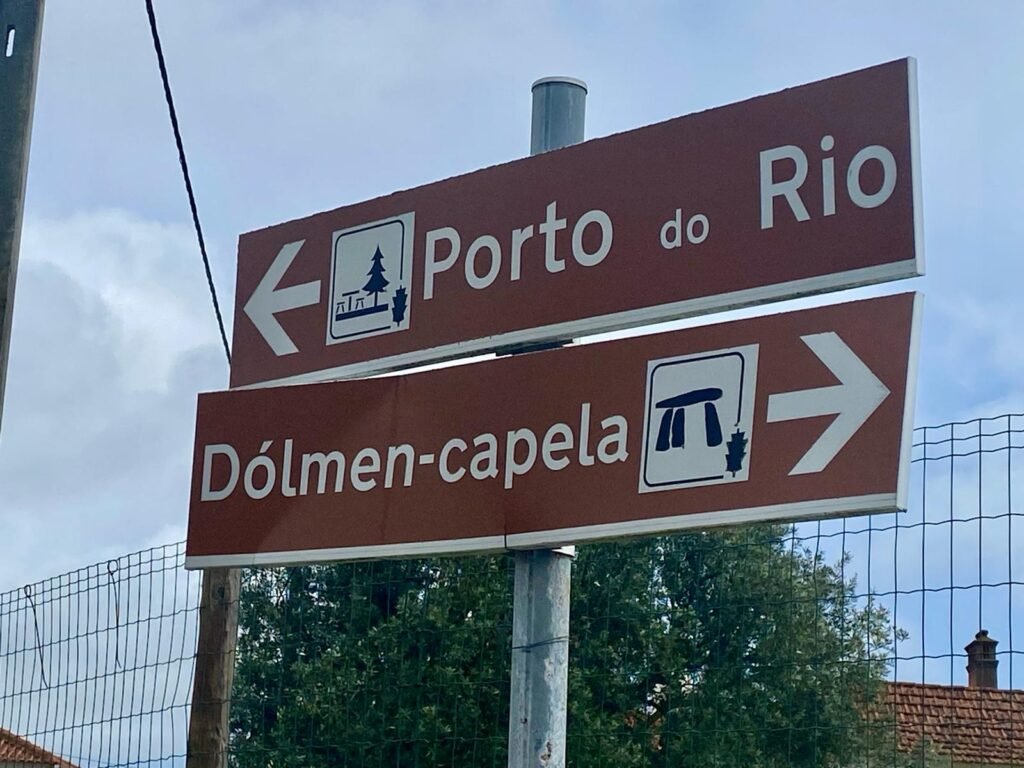Sitting in the quiet & peaceful church, you can contemplate faith and history at the same time. The church itself dates back to the 16th century, and the hundreds of years of devotion has permeated the azulejo tiles, marble altar, and beautiful stained-glass windows devoted to its patron saint. Then you turn and enter the side chapel. Pass through the arch and you enter a short stone corridor and then step out into a vast chamber. The stone walls stretch meters up to the white plaster ceiling, well-lit even on a cloudy day. A small statue (and another azulejo panel) of Mary Magdalene welcomes you to this chapel which was originally built thousands of years before Jesus was born. As you pray here, you can really reflect on the passing of time. How many thousands of people have prayed, celebrated, …or had previously been entombed here?










The dolmen dates back to the late Neolithic or neo-Chalcolithic period. At some point, it was Christianized and turned into a chapel. In 1536, the chapel was elevated to the status of a church and the church was built, turning the former dolmen into a side chapel. Some archaeological excavations were carried out in the 1800’s and 1900’s.
In Portuguese, a dolmen is usually called an anta but the term dólmen is also used. The site is usually referred to as the Dólmen-Capela of the Igreja (church) of Santa Maria Madalena (St Mary Magdalene). It is also referred to as the Anta-Capela of Alcobertas.
There are a number of anta-capelas around Portugal. The most well known are the Anta-Capela de São Dinis (in Pavia, about 130km away), and the Anta-Capela de São Brissos (near Escoural, about 180km away).
Location
The church is in the centre of the town of Alcobertas, which is in the Santarém district inside the Natural Park of Serras de Aire and Candeeiros. (It’s just to the east of the N1 heading up towards Leiria.)
Access
The church is on a side street just off the main road through town. There is ample parking and the church is easily accessible and open throughout the day.
Signage

In the town, there are signs pointing towards the Dólmen-Capela along the main road.
Links
- Article (in Portuguese) from the Rio Maior tourism website
- Description (in Portuguese) from Archaeological Portal of Directorate-General of Cultural Heritage
- Designation (in Portuguese) as a Property of Public Interest by the Director-General of Cultural Heritage
- Register (in English) on the Megalithic Portal website
- Facebook page (in Portuguese) for the church
Nearby
The Natural Park of the Serras de Aire e Candeeiros has many fossil sites including the Dinosaur Footprints of Vale de Meios, the Jurassic Beach of São Bento, and more.

Pingback:Anta-Capela de São Brissos - Prehistoric Portugal
Pingback:Anta-Capela de São Dinis - Prehistoric Portugal